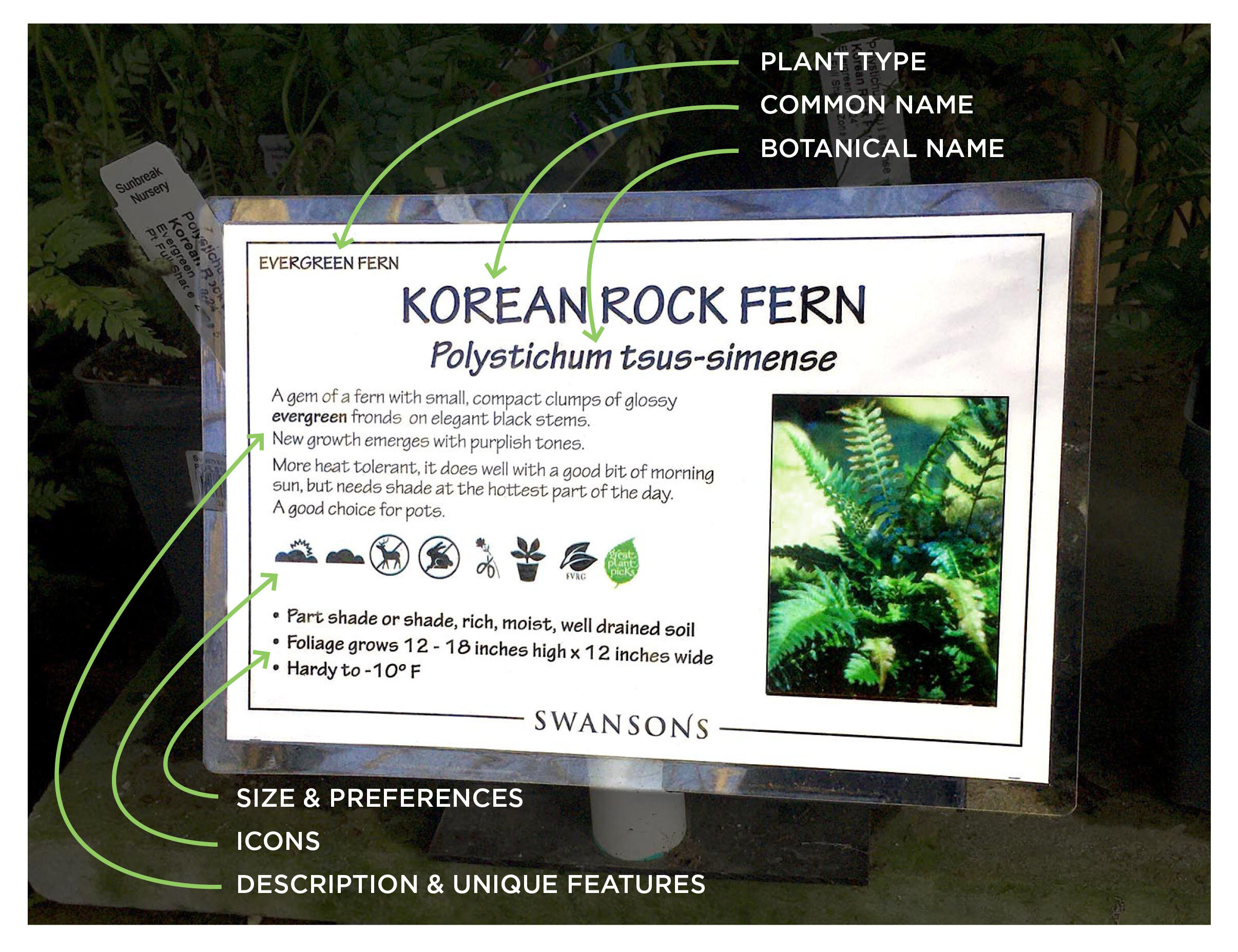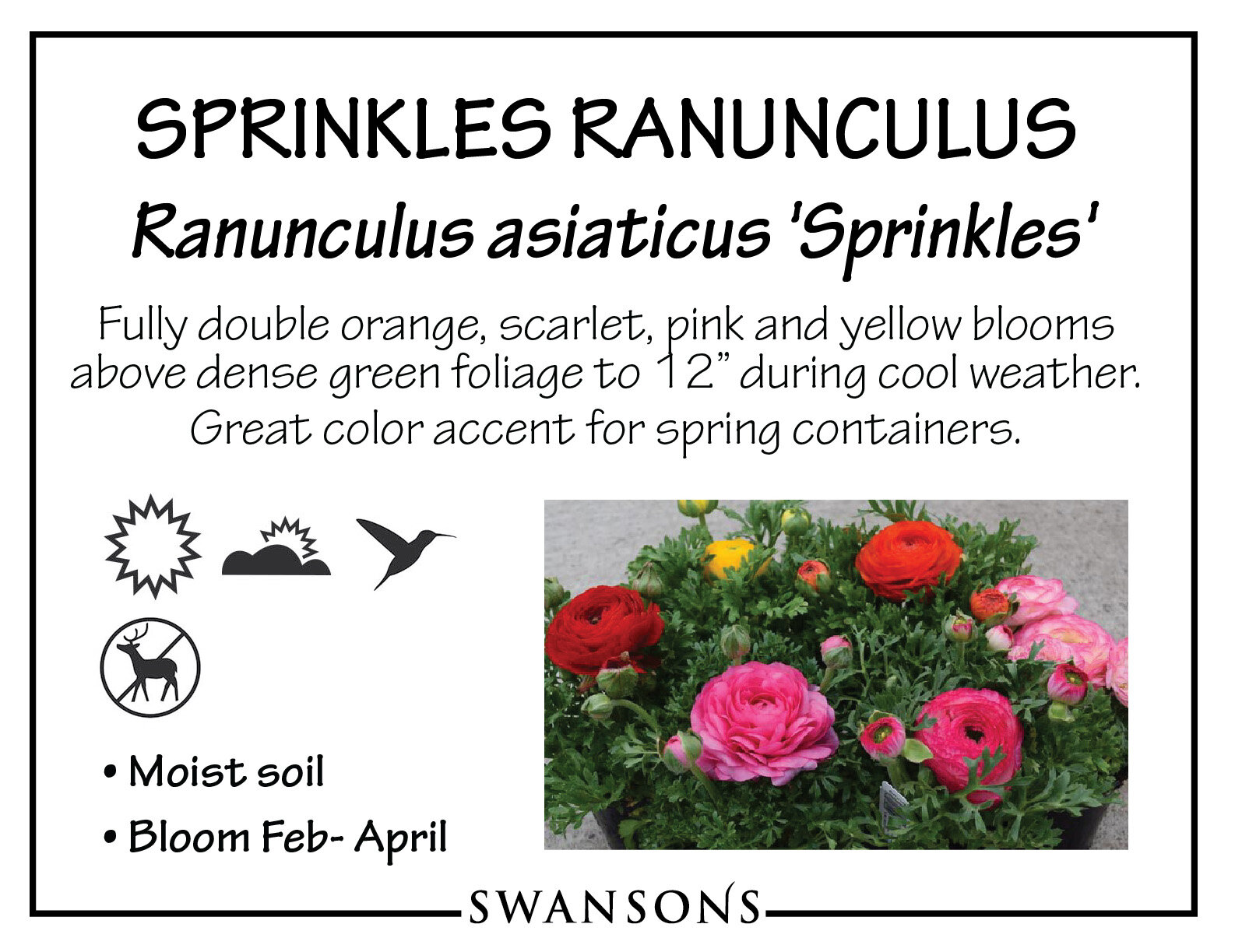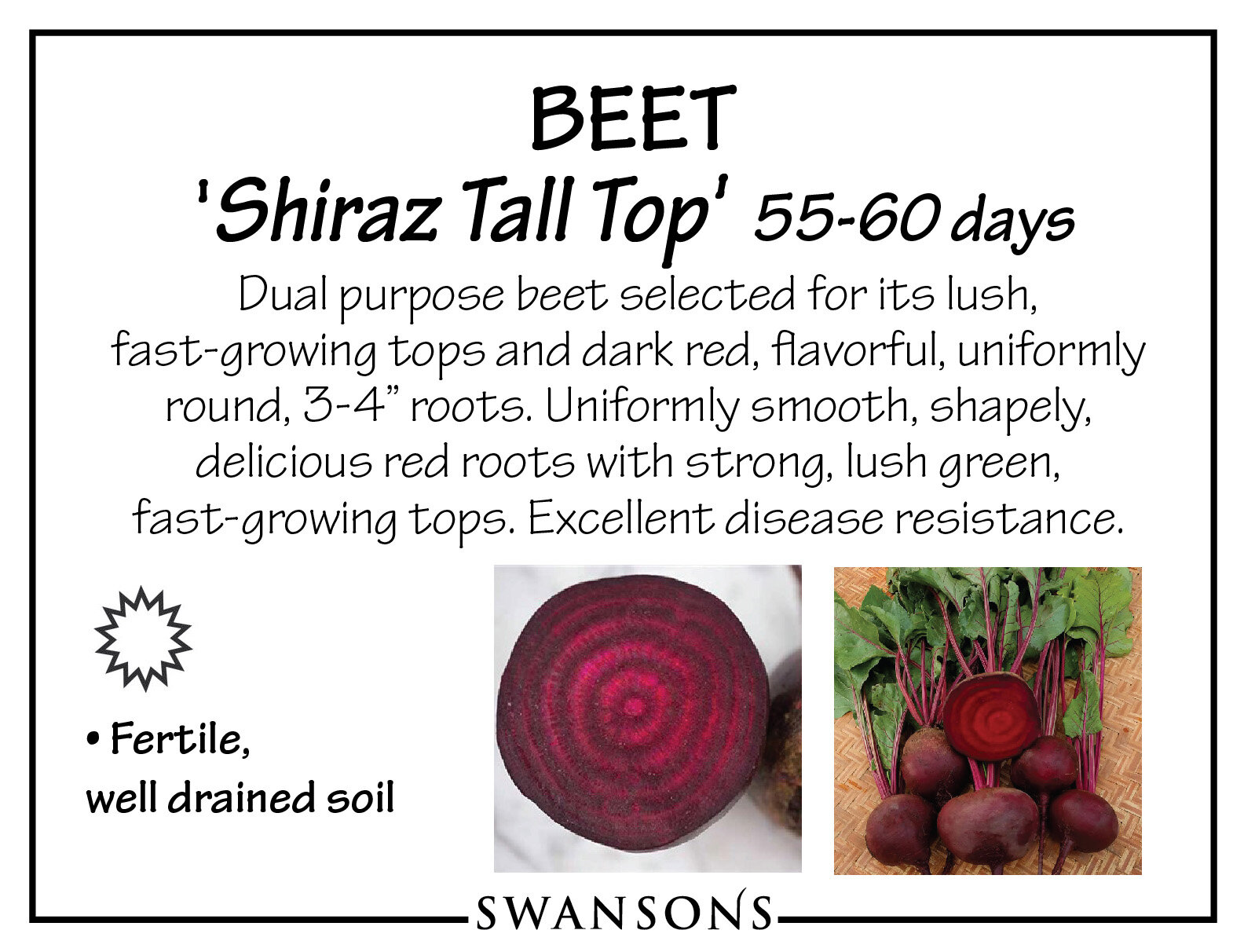Let’s be honest — navigating the plant selection at Swansons is, at times, bewildering, with the astounding array of plants that circulate here. Heck, we have a hard time ourselves, learning about and keeping track of all of them. So we continually strive to get up-to-date plant information to you (and our staff), to help make the best choices for your garden.
Over the last 25 years we have created and posted signs for as many plants as we can, especially our perennials, shrubs and trees. We're kinda proud of that — as far as we know, few garden stores in the nation (or the world?) provide as much plant information at customers' fingertips as Swansons. Some of our plants come to us with excellent, pre-printed labels, but their content might be generalized for the U.S., as to growth rate, care recommendations, etc. So we customize our signs for the Puget Sound region and base them on our personal experience as much as possible.
So here is a quick primer on what to look for, and how to get the most out of our signs!
Please note that: 1) the arrangement and style of the information presented may vary slightly between departments or ages of different signs; and 2) remember that listed sizes, color, and other details are affected by many variables in the garden. It's a challenge to be precise with living materials, such as plants.
Plant type
This is fairly self-explanatory, though sometimes we qualify what is evergreen vs. deciduous (non-evergreen). Example: some plants may be evergreen in most winters but lose their leaves under a certain temperature. In these cases, we typically explain that in the description.
Common Name
Just what it says: what most folks in our region will call it. Sometimes the most common name has changed from thirty years ago. Sometimes the most common name is also the botanical name. Occasionally there are several unrelated plants with the same common name (e.g., cypress, bluebells, money plant), which is why we include…
Botanical name
The Latinized classification, specific to this plant only. This is listed by genus-species-cultivar (or sometimes natural variation).
Description & UNIQUE Features
This is why we like this plant and think you will, too! We might also include how it’s best used in the garden and what other plants pair well with it.
Icons
We also often include icons to help you spot features such as “fragrant” or “low water use.” Our indoor plant signs have a different set of icons. Sometimes there are special icons, such as the green logo on the Korean Fern sign above, endorsed by Great Plant Picks. Here is the key to our general plant icons:
Size & Preferences
Expected size, behavior, and preferred conditions to thrive. Note that the listed size, especially for trees, is often a 10-year estimate, so you may wish to ask about the ultimate mature size.
Images
Whenever we can, we include images that show how most people experience the plant in the garden. Sometimes we include multiple images for various features. Please know that there can be variations in color or details due to printing, fading, etc., so if there’s any question about the image, refer to the written description or ask us.
Family (ON SELECTED SIGNS)
Plant-nerd, stuff, we know. But sometimes very helpful for specific types of horticultural or planting projects, or managing health issues, that would be best explained outside this blog
Beyond the signs
We share lots of other plant and gardening information in the store and on our website, in the form of informational posters at the store, plant care handouts (available in the store and on the PNW Garden Tips page of our website), monthly gardening tips, and blog posts like these. We can also direct you to a wealth of informative, local, and national resources.
If our signs help you learn and help yourself, great! They’re doing their job. But they might not substitute for a conversation with an authentic Homo sapiens. So if you have further questions, please don’t hesitate to ask one of our talented staff. None of us have ALL the answers, but we will do our best to get you the answers you need.
Happy reading!








